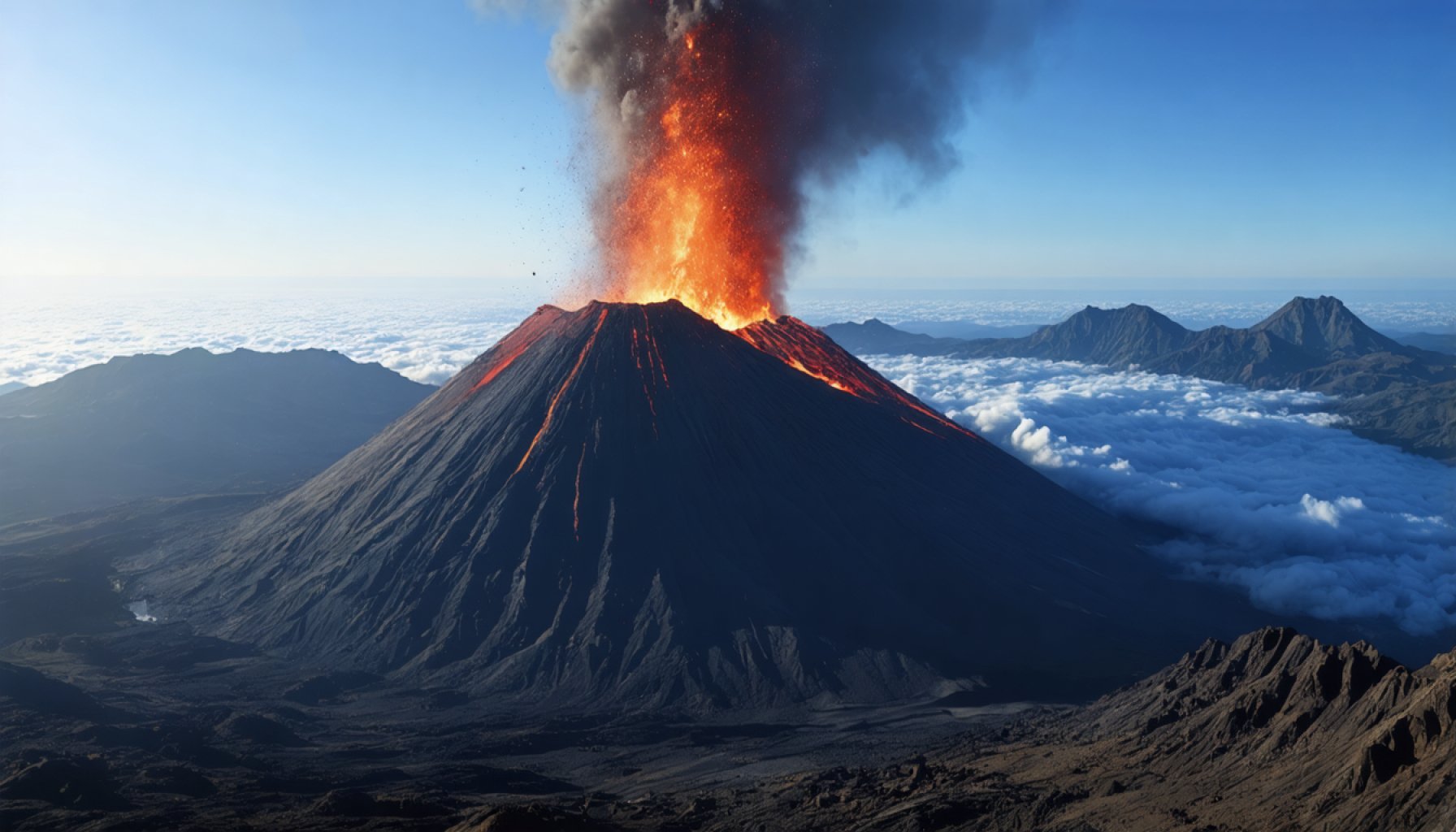- Zavaritzki, a hidden volcano in the Kuril Islands, caused significant climate disruption with its 1831 eruption.
- Sulfur-rich ice cores revealed the eruption’s impact, leading to strange weather phenomena and a worldwide temperature drop.
- Volcanologist William Hutchison linked sulfur and mineral shards to the volcanic event, solving a long-standing atmospheric mystery.
- Past volcanic activities, like those from Zavaritzki, emphasize the global influence of remote volcanoes on climate and agriculture.
- The story underscores the importance of monitoring obscure volcanoes to prevent future unexpected climate shifts.
Tucked away in the northwestern reaches of the Pacific, Zavaritzki, a little-known volcano in the Kuril Islands holds a powerful secret within its steep walls. This sleeping giant once sculpted global climates nearly 200 years ago, unnoticed by the world.
Long relegated to the fringes of exploration and maps, Zavaritzki’s volcanic outburst in 1831 startled the world with a chilling surprise. Sulfur-loaded ice cores—fragments of past eruptions frozen in time—recently unveiled the eruptions of this cauldron-shaped caldera as the source of an enigmatic weather shift. In that year, chronicles tell of skies painted in bizarre hues, graced by a sun tinged with green, and temperatures abruptly plummeting.
Volcanologist William Hutchison pieced together this atmospheric puzzle by connecting sulfur traces and potassium-poor mineral shards from Zavaritzki to ancient events. It was a momentous break in solving the long-standing mystery of why 1831 felt bizarrely off-kilter.
This archipelago wonder isn’t merely scenery; it’s a lesson etched in stone and ash. Beneath its still surface, cinder cones that rise like sentinels speak of its fiery history. These volcanic formations, built layer by layer during dramatic episodes, forewarn of the potential hidden within forgotten volcanoes.
Zavaritzki’s story accentuates a simple truth: volcanic events, even from overlooked peaks, can ripple across the earth, altering weather and crops, destabilizing normalcy. While modern technology casts a watchful eye globally, it’s crucial to never underestimate the obscure. Our shared sky and weather are a collective script with all its actors, significant and subtle. This narrative of Zavaritzki implores us to vigilantly monitor the remote corners of our planet, ensuring history doesn’t repeat with surprise upheavals.
Unlocking the Secrets of Zavaritzki Volcano: What It Means for Our Future
How-To Steps & Life Hacks
– Monitoring Volcanic Activity: Use satellite imagery and ground-based sensors to track changes in a volcano’s shape or geothermal activity. Websites like the USGS offer resources for amateur volcanologists.
– Collecting Data from Ice Cores: Scientists drill into ice sheets to extract cores, then analyze the trapped gases and particles to understand historical volcanic activity. Interested amateurs can learn basic principles from online courses in climatology and geology.
Real-World Use Cases
– Climate Modeling: Volcanic events like Zavaritzki’s 1831 eruption are essential for refining climate models that predict weather patterns and long-term climate change.
– Agricultural Planning: Historical volcanic activity can guide agricultural practices by indicating potential areas and times for climate anomalies, helping farmers prepare.
Market Forecasts & Industry Trends
– Volcano Tourism: Regions surrounding the Kuril Islands could see increased interest as volcanic tourism grows. According to the Statista, global adventure tourism is slated to grow to $1 trillion by 2025, with volcano visits being a top attraction.
– Geothermal Energy: The interest in geothermal energy harnessed from volcanic regions is on the rise, promising a green energy boost in the push for sustainable resources.
Reviews & Comparisons
– Zavaritzki vs. Other Volcanic Sites: While Zavaritzki is lesser-known, it shares characteristics with major volcanoes like Yellowstone and Mount St. Helens. All have the potential to impact global climate, though they differ in eruption frequency and energy output.
Controversies & Limitations
– Underestimation of Unknown Volcanoes: Many scientists argue that there could be numerous unknown volcanic sites with the potential to impact global climate—highlighting the need for expanded research funding and international cooperation.
Features, Specs & Pricing
– Volcano Monitoring Technology Costs: Equipment ranges from $10,000 for seismic sensors to millions for full satellite imaging systems—a worthwhile investment for understanding potential global impacts.
Security & Sustainability
– Sustainable Monitoring: Implementing renewable energy sources to power remote monitoring stations helps reduce the carbon footprint of volcanic research operations.
Insights & Predictions
– Future Eruptions: While predicting exact eruptions is complex, understanding past patterns of volcanoes like Zavaritzki helps refine predictive models, indicating that future climate impact events may not be as surprising if monitoring persists.
Tutorials & Compatibility
– Online Courses: Platforms like Coursera offer courses on climate science and volcanic activity for a deeper understanding of the subject.
– Tech Integration: Smartphone apps can now offer real-time data and alerts about nearby volcanic activity for travel safety and educational purposes.
Pros & Cons Overview
– Pros: Provides crucial data for climate models; can be tapped for geothermal energy; potential for eco-tourism.
– Cons: Difficult to monitor due to remoteness; unpredictable eruptions still pose a global risk.
Actionable Recommendations
1. Educate Yourself: Engage with online courses or local club talks about geology and volcanology.
2. Support Sustainable Practices: Encourage initiatives that focus on sustainable energy and volunteer for educational outreach.
3. Stay Informed: Use credible sources like the USGS for updates on volcanic activity and climate impacts.
This overview of Zavaritzki volcano serves as a reminder of the power of natural forces and the need for vigilant global monitoring. Ensuring we harness these insights to prepare for future events is not only wise but necessary for global stability.
